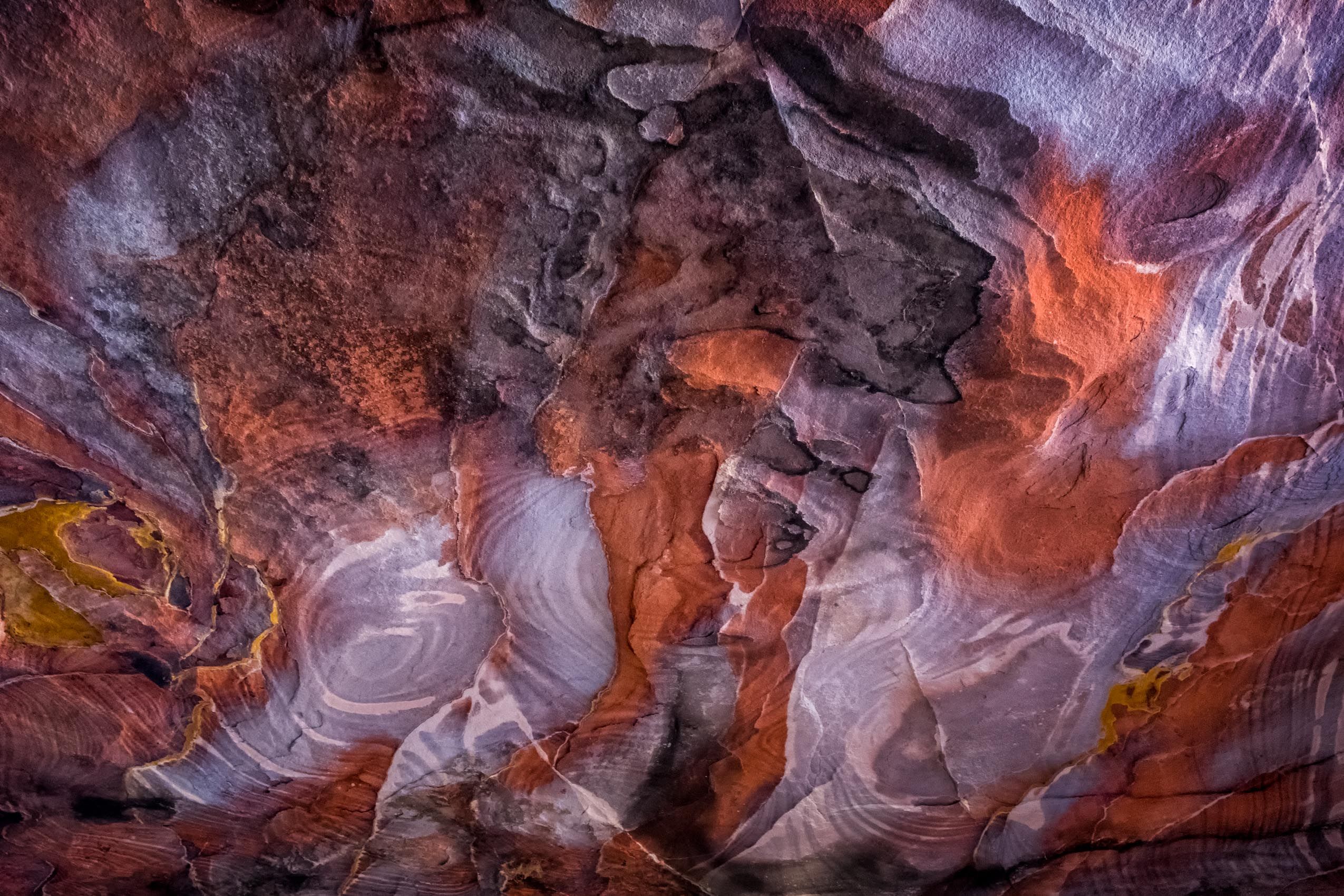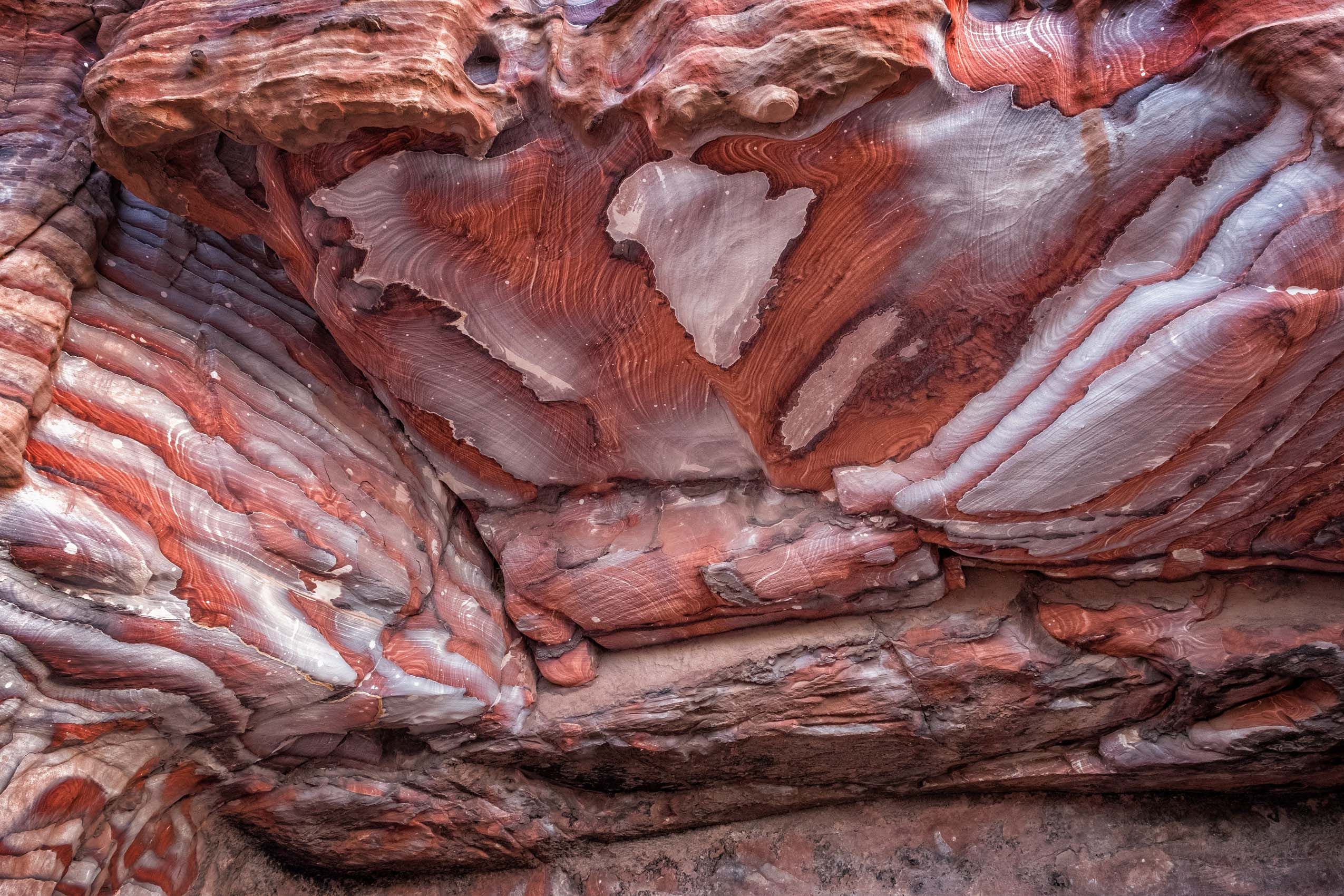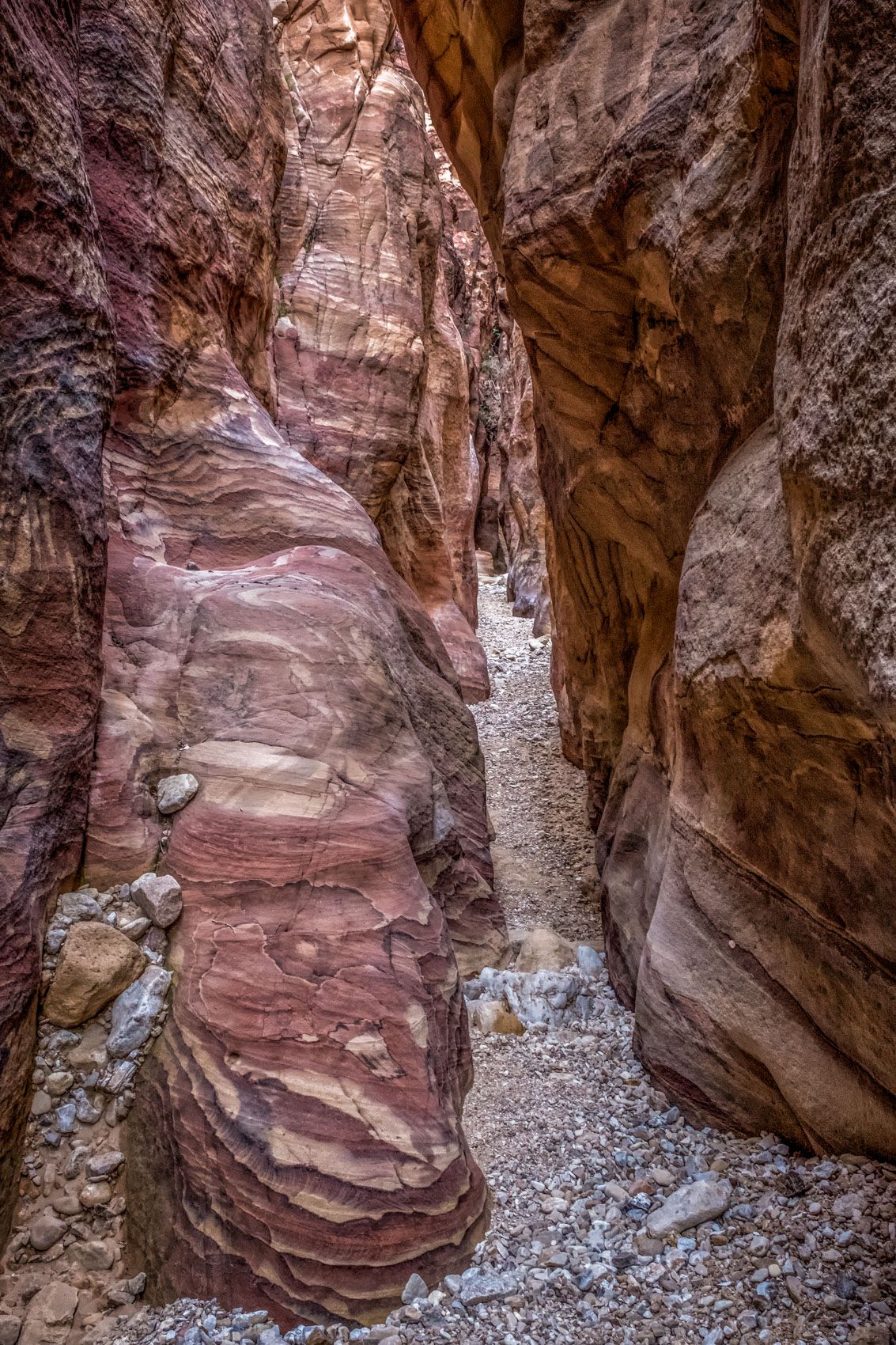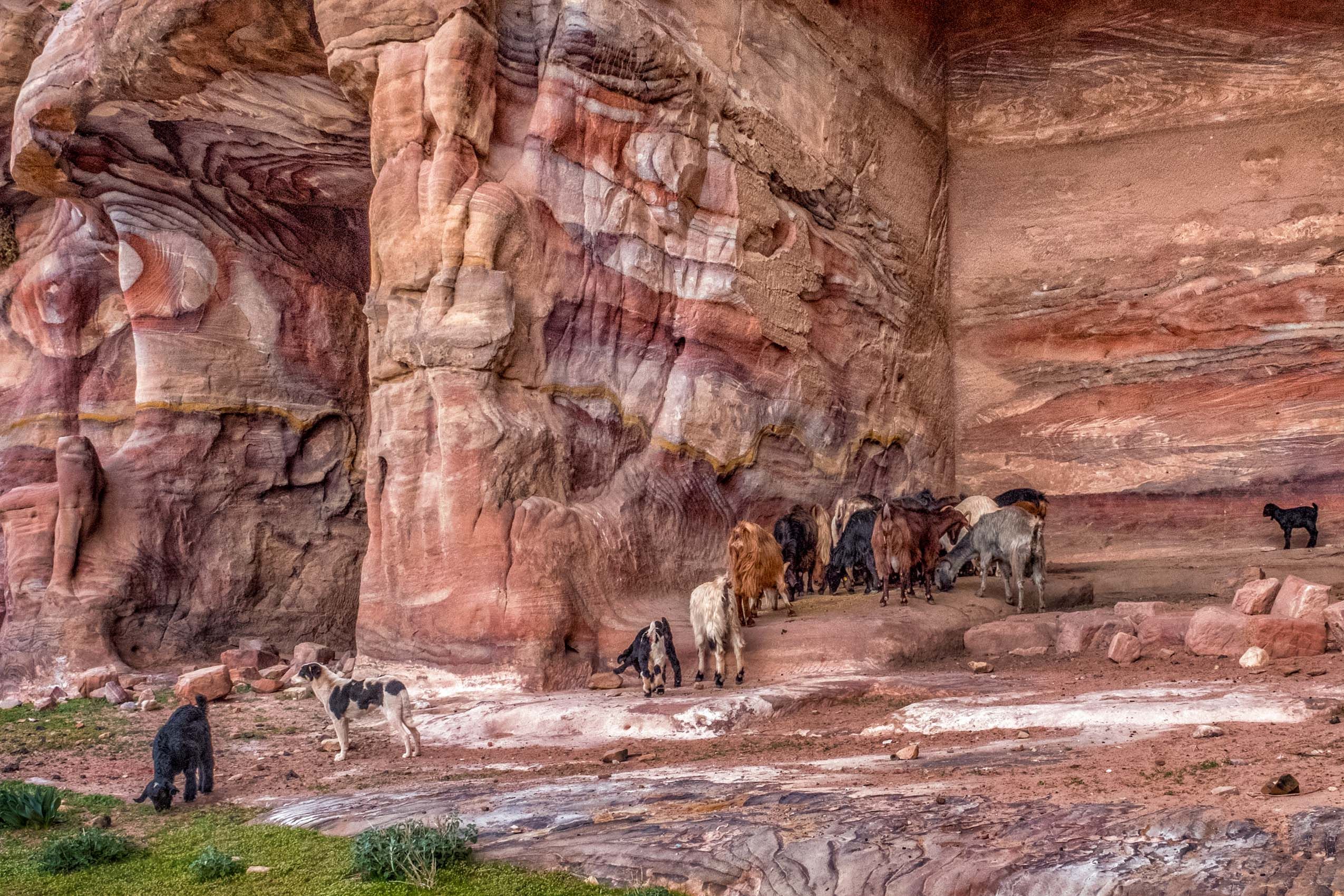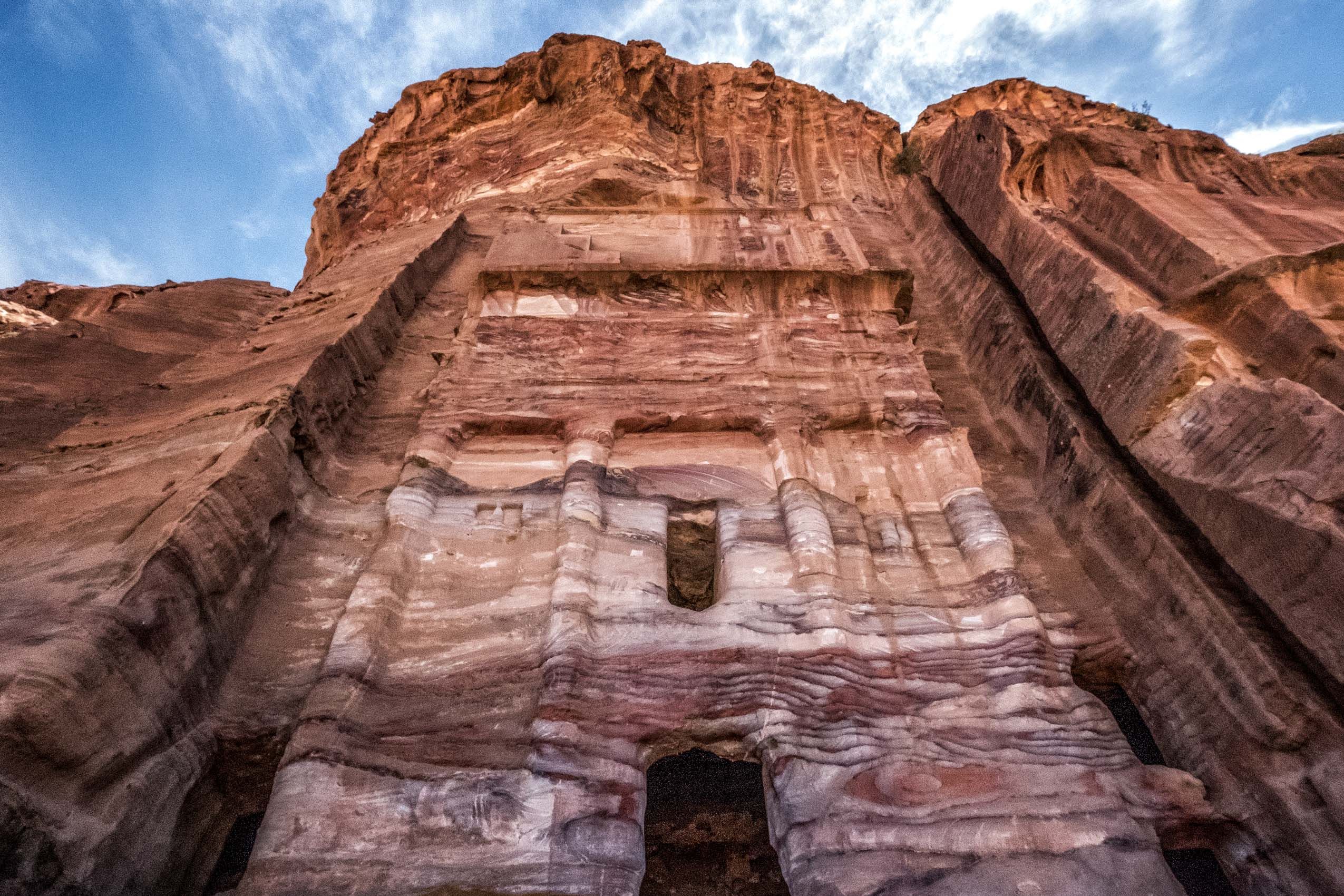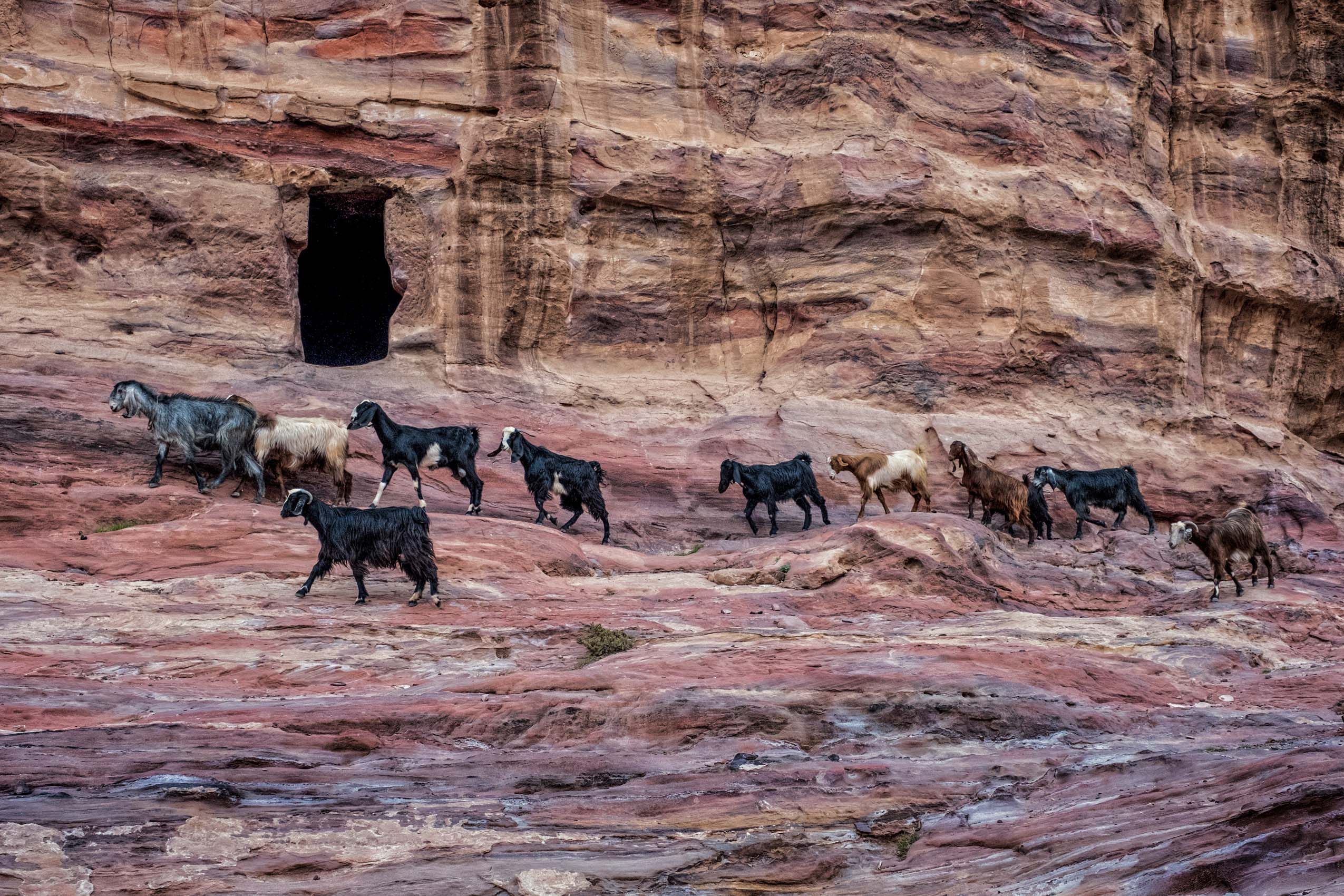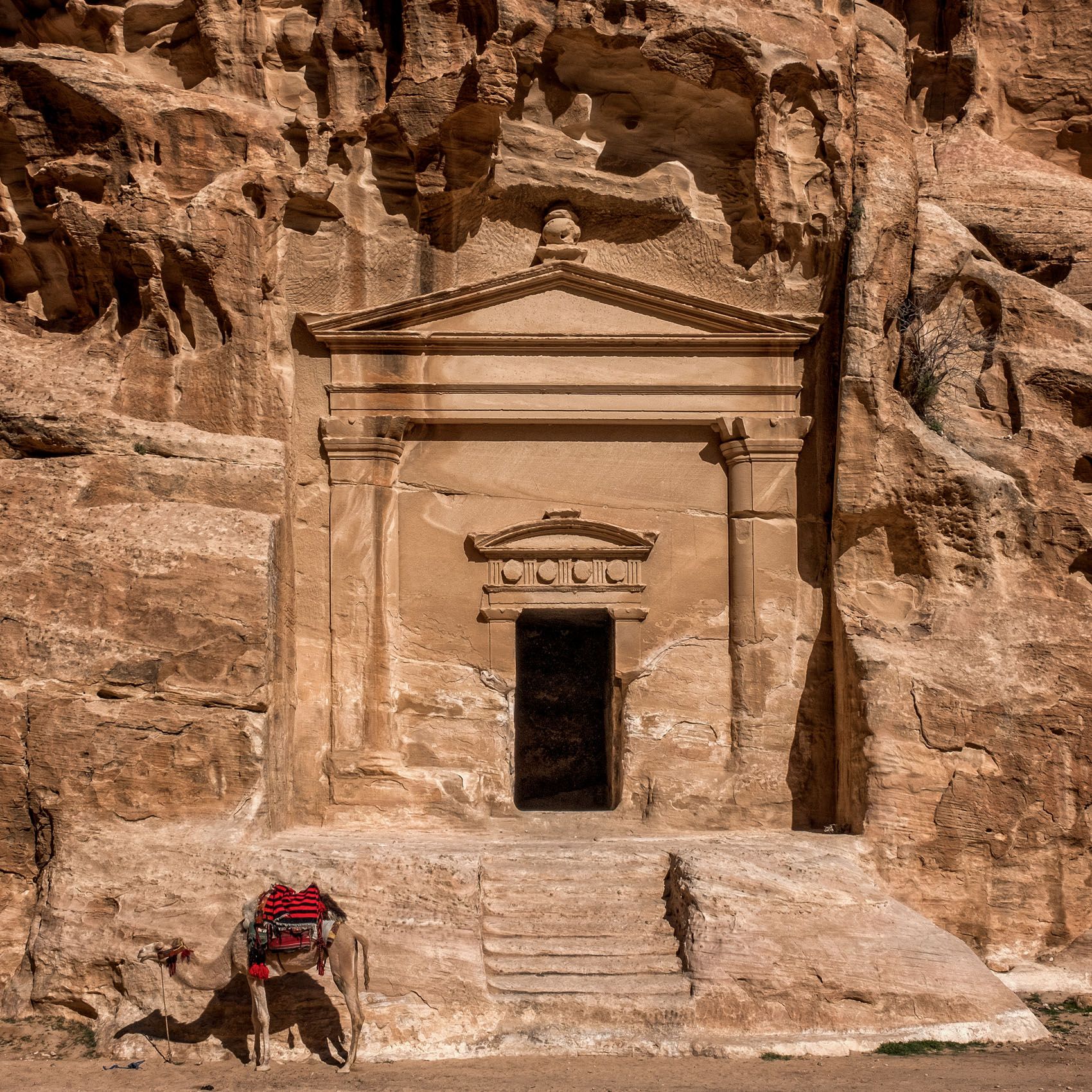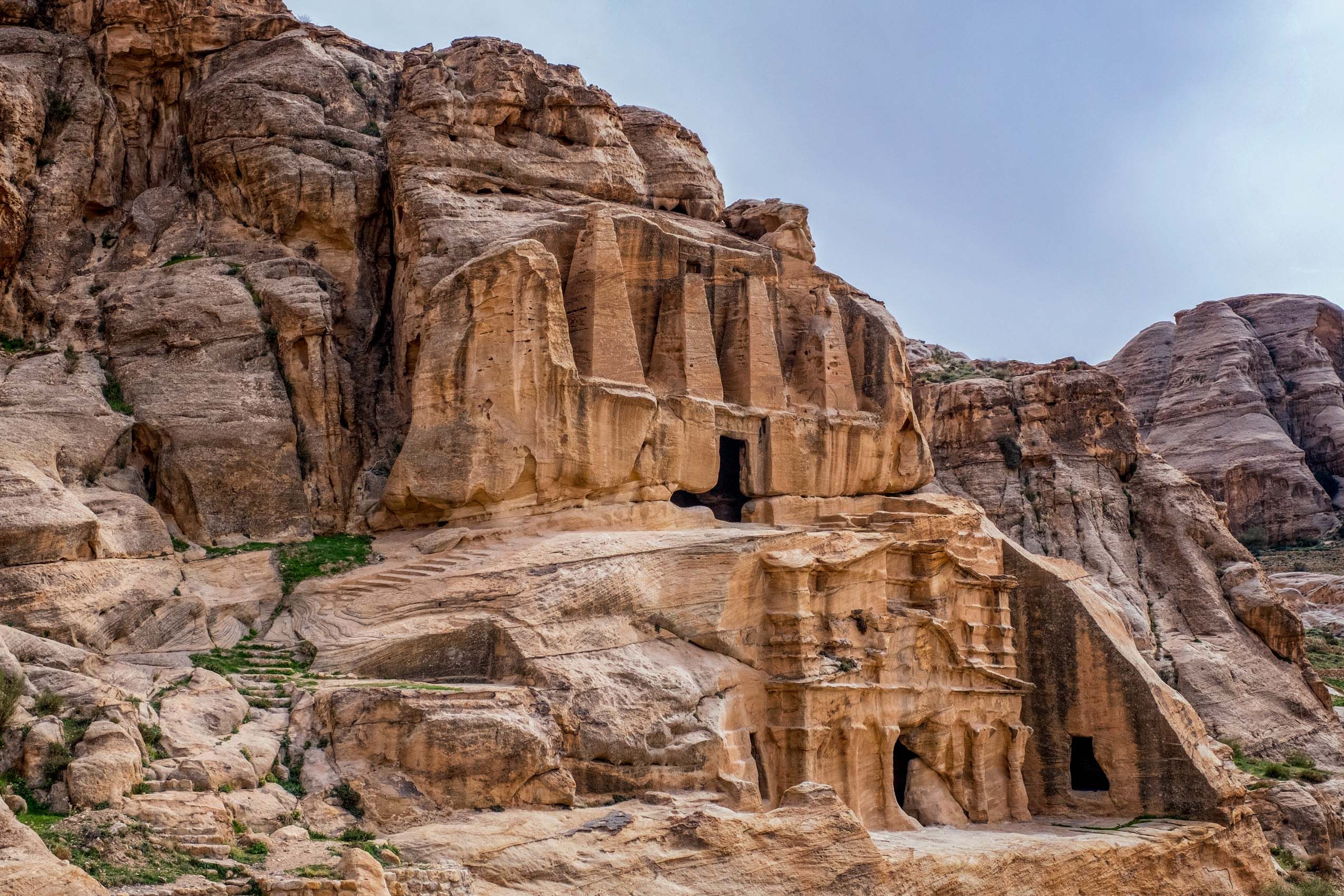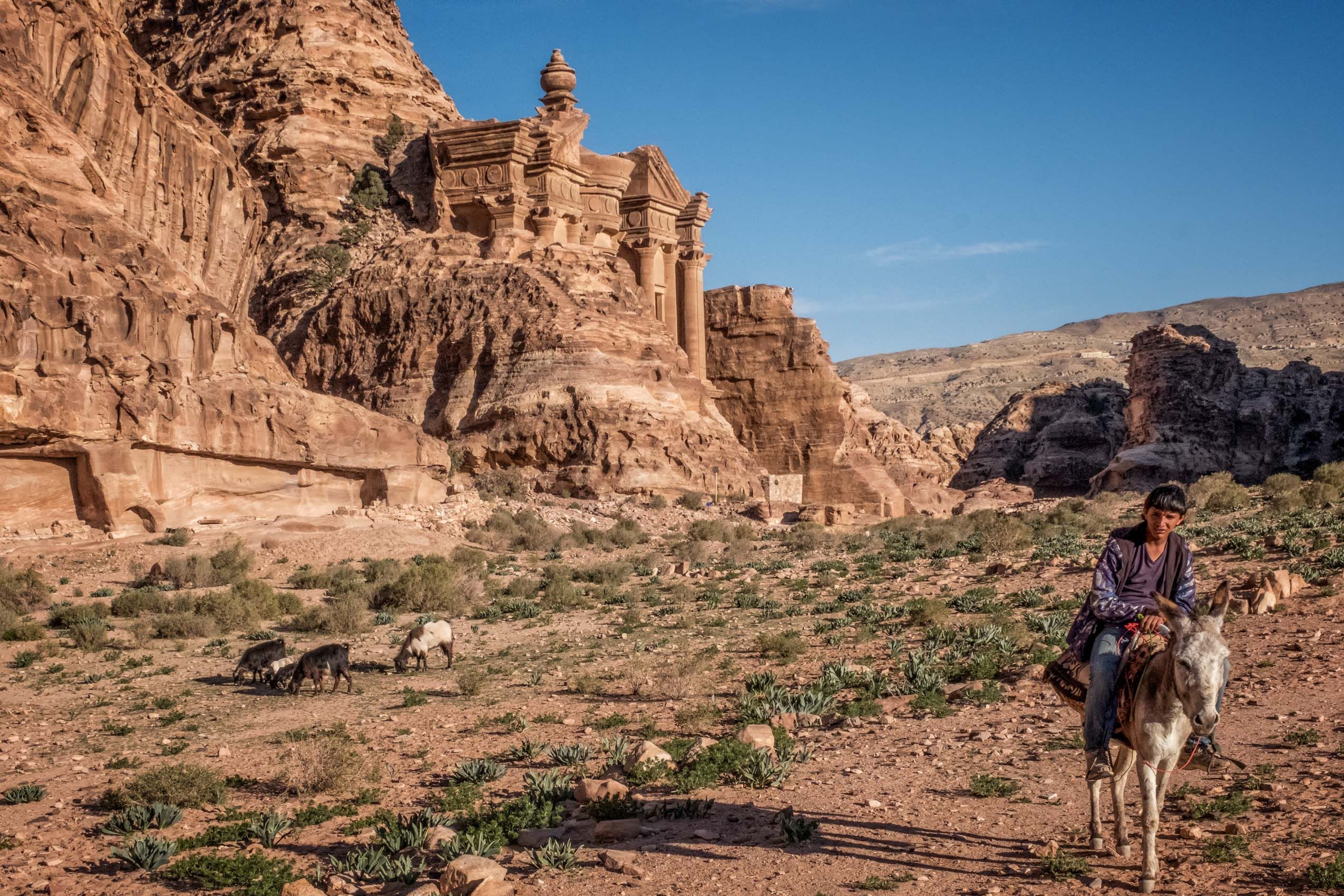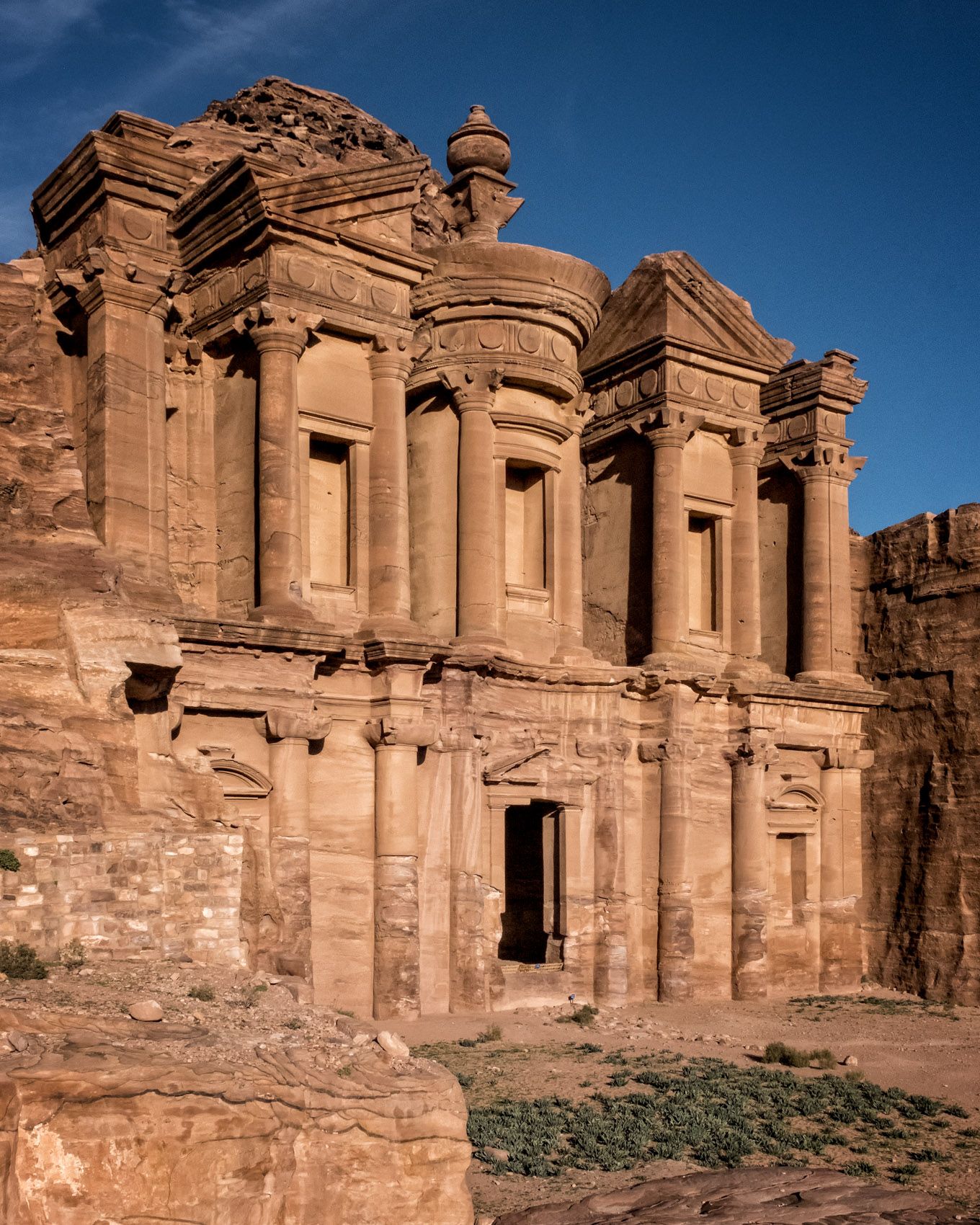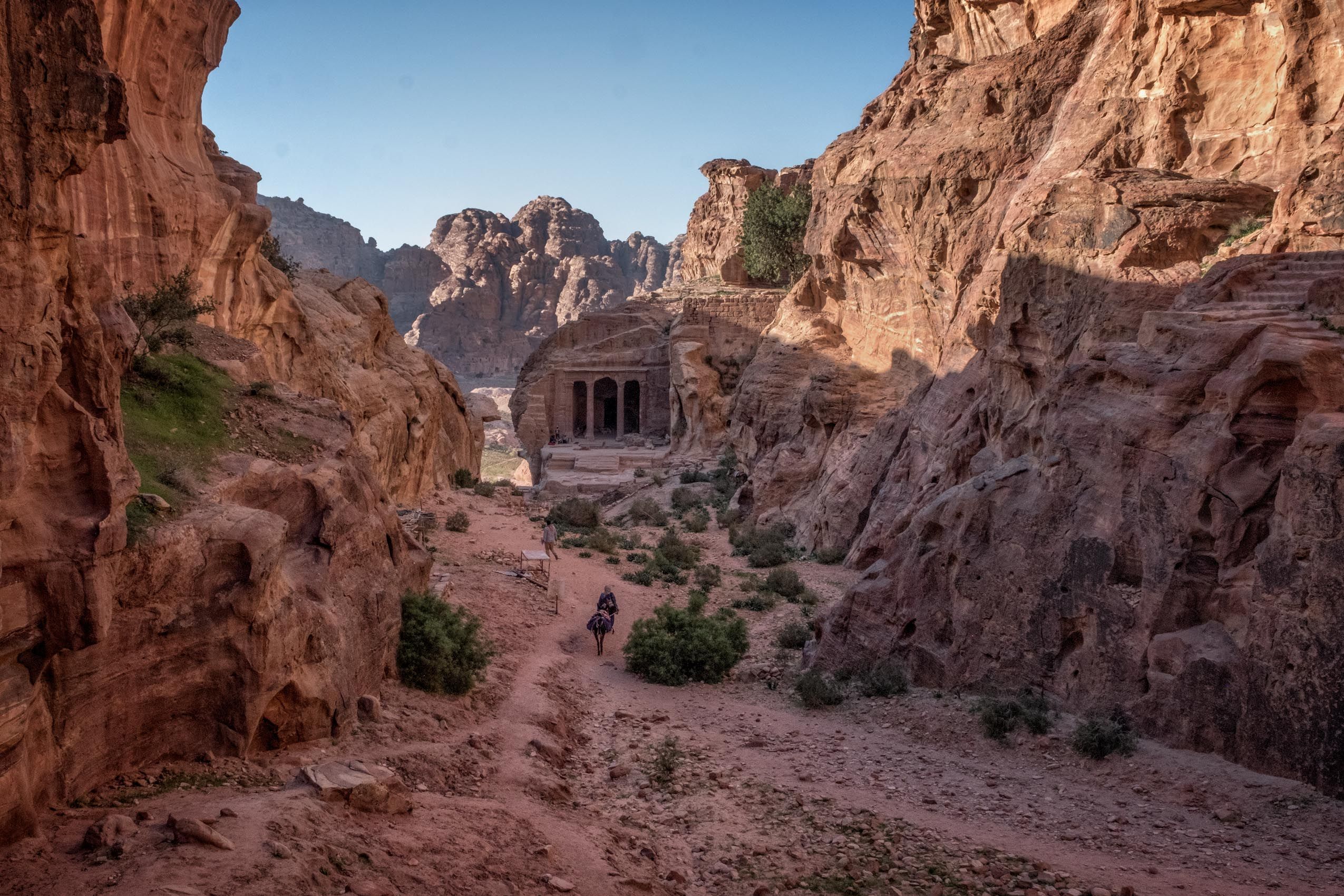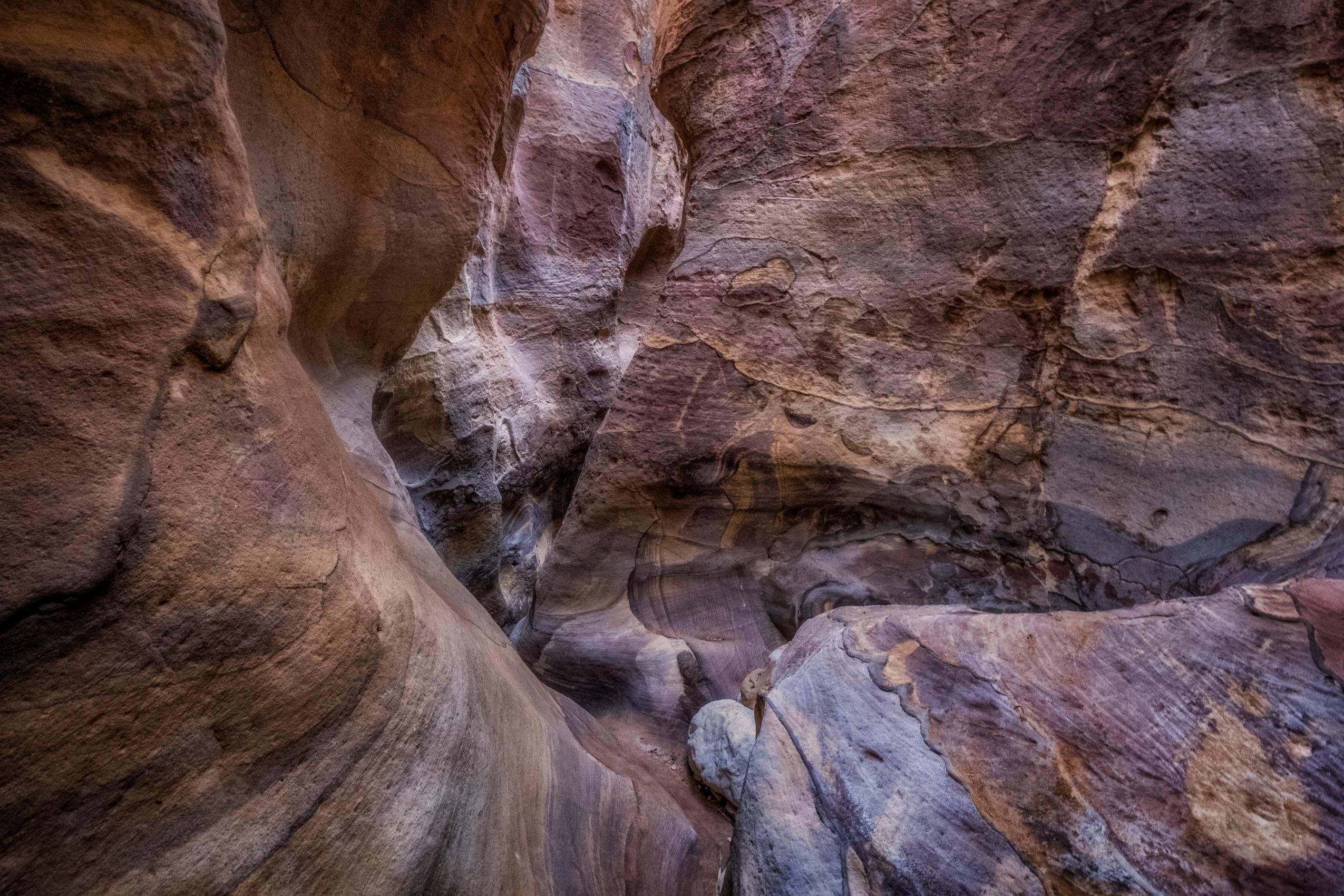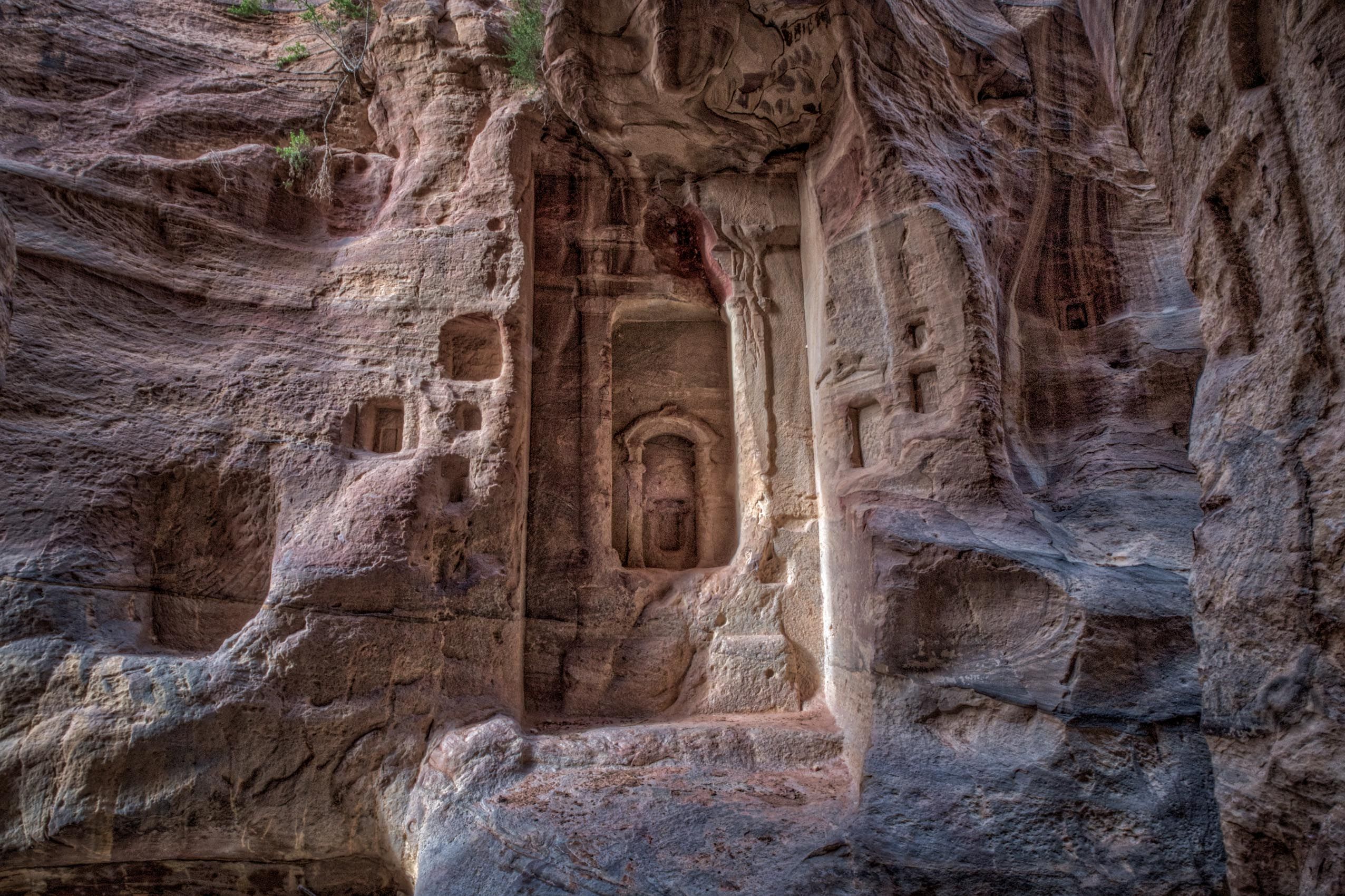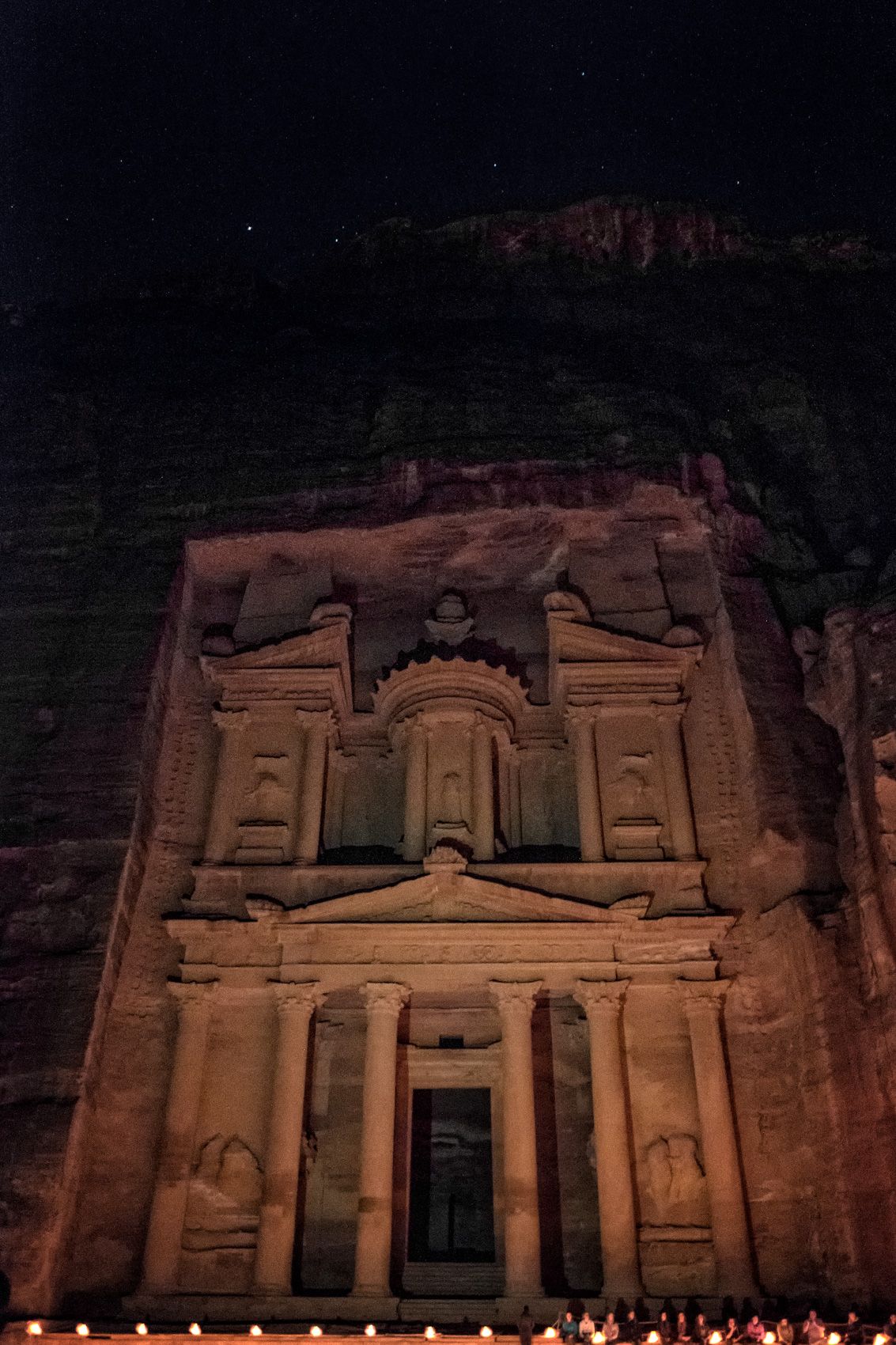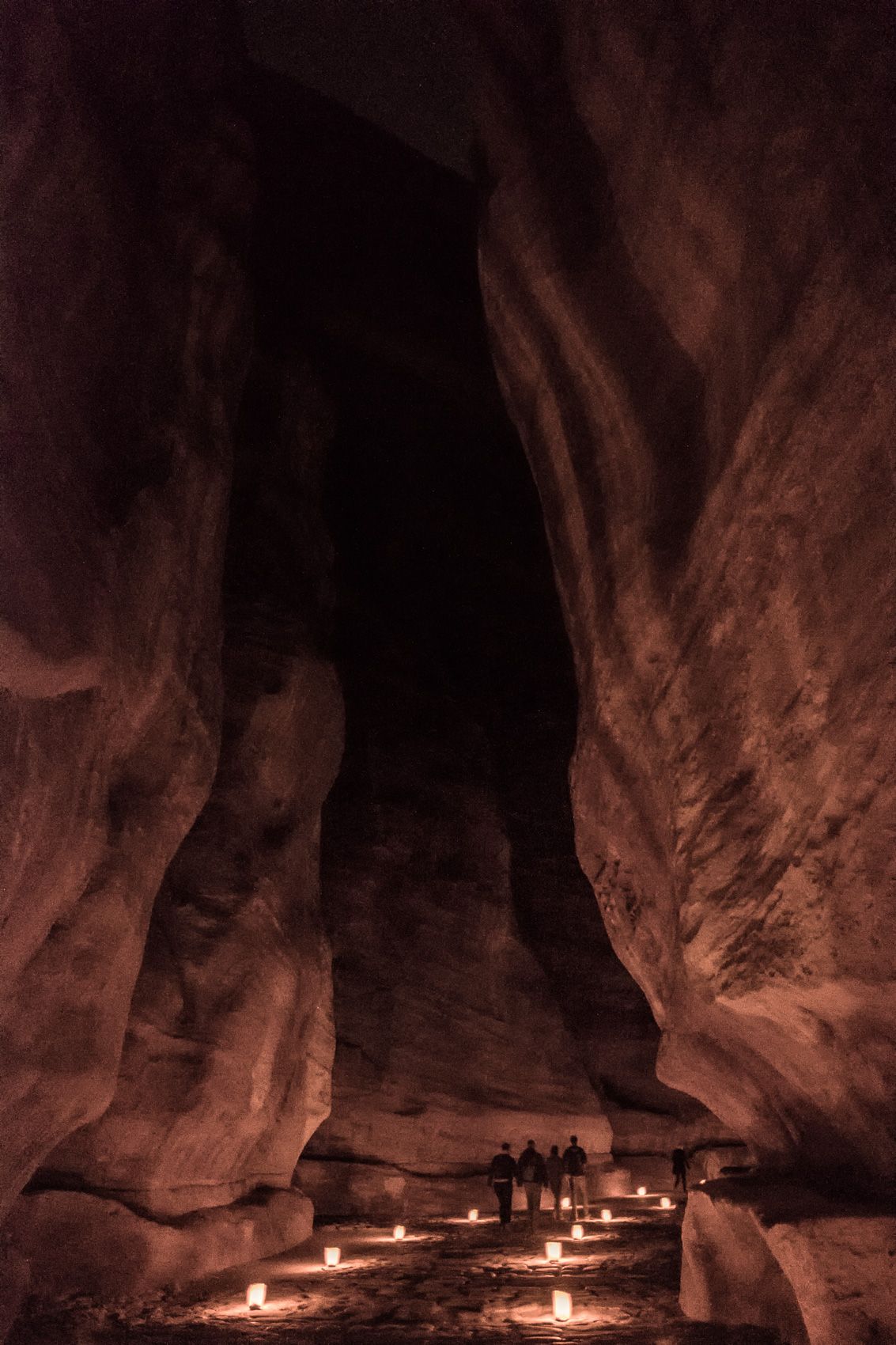JORDAN: Petra, Rock of Ages
The name of this fabled place is a feminine form of the Greek word for rock. A complex of sandstone canyons and valleys hidden in mountainous southeastern Jordan, Petra has been a site of human habitation for millennia. Its rise to power and wealth in the ancient world followed settlement by a tribe of Bedouin nomads migrating from Arabia and known as Nabateans. Nabatean wealth and power were founded upon making Petra a hub of trading routes that stretched from the Mediterranean to the Arabian peninsula and eastward as far as China. Petra was at its height in the last century BC and first century CE, after which it was absorbed into the Roman Empire. Changing land routes and developing water routes for trade led to Petra’s decline; by the time an eighth century earthquake caused major destruction, the city was already largely abandoned. Although the area was continuously inhabited by local Bedouin pastoralists, it was “rediscovered” by Westerners in the nineteenth century. Today it is a major UNESCO World Heritage site. The many rock carved Nabatean structures scattered throughout the canyons are for the most part heavily weathered by wind and water erosion and flash floods. In the process, the work of time and weather has created and revealed spectacular patterning of iron and other mineral deposits in the sandstone. It is the effect of the softened architectural contours emerging from and receding into the natural forms and colorful patterns of the rock that gives Petra its unique beauty. Petra’s iconic view is of the so-called Treasury, its best preserved rock cut structure, emerging into view at the end of the long slot canyon or Siq through which most visitors enter the site. Relatively few tourists venture much beyond this point; but with time and stamina and the company of a good local Bedouin guide, there are many more wonders awaiting the curious traveler in Petra.



















